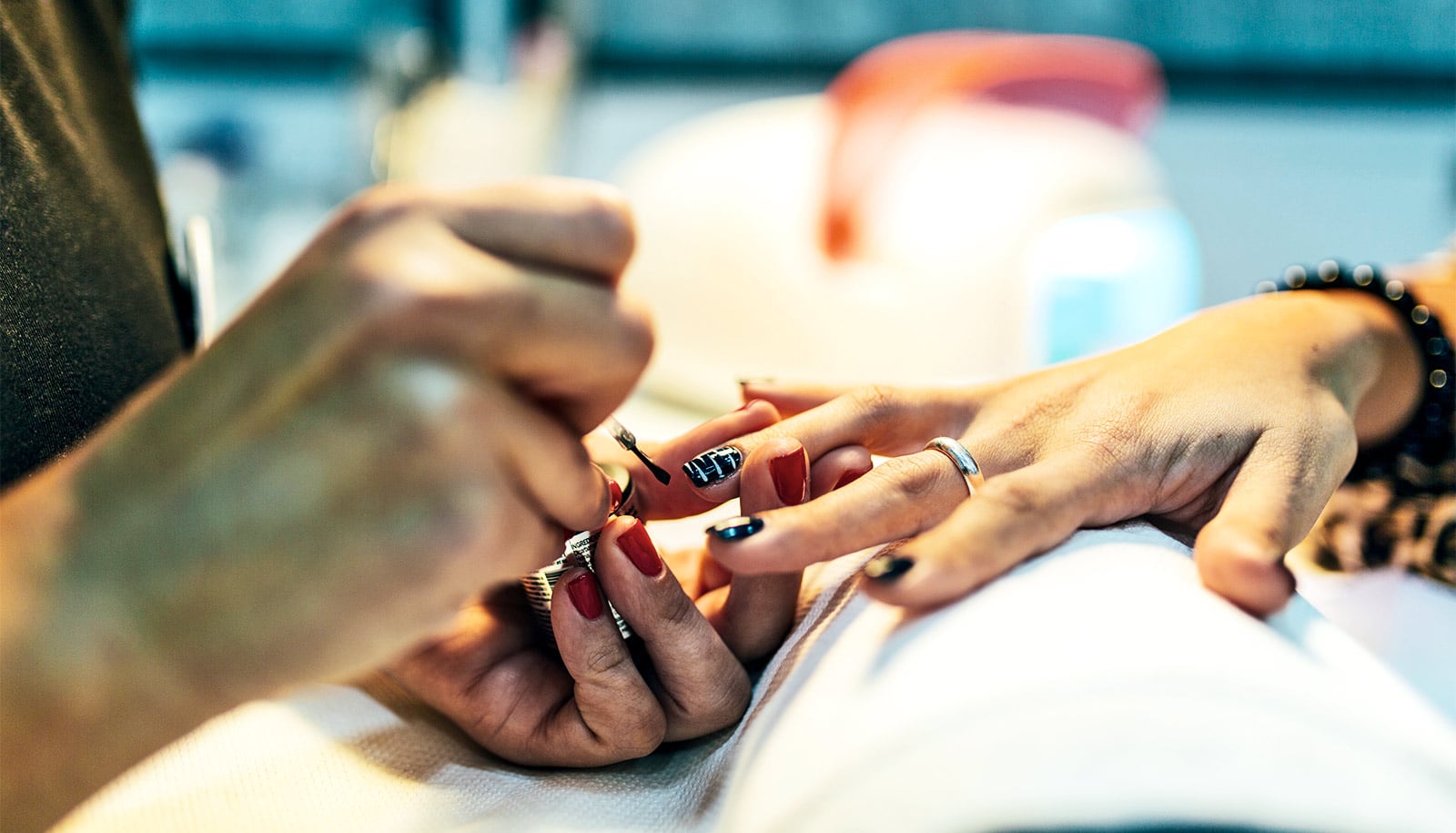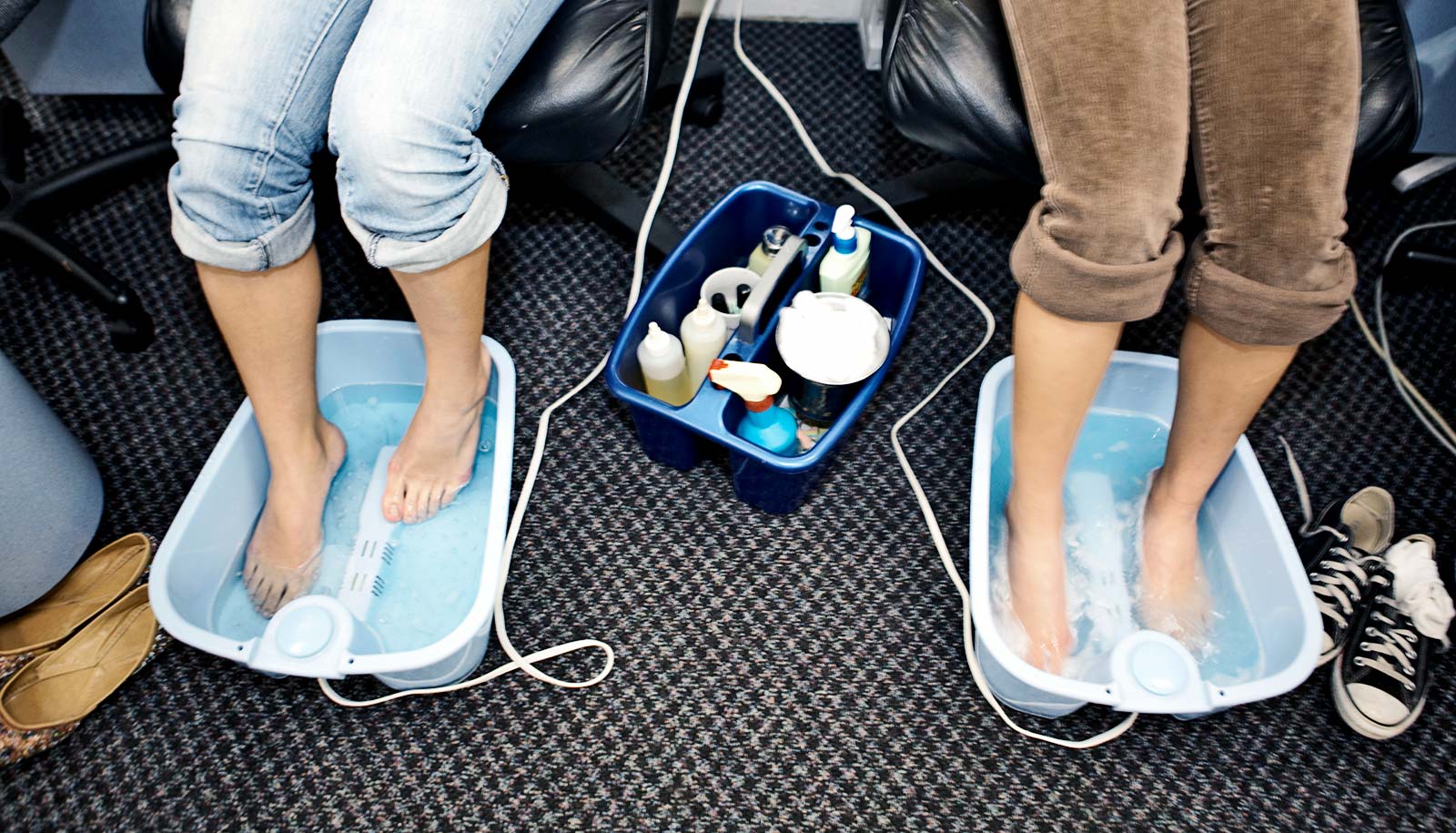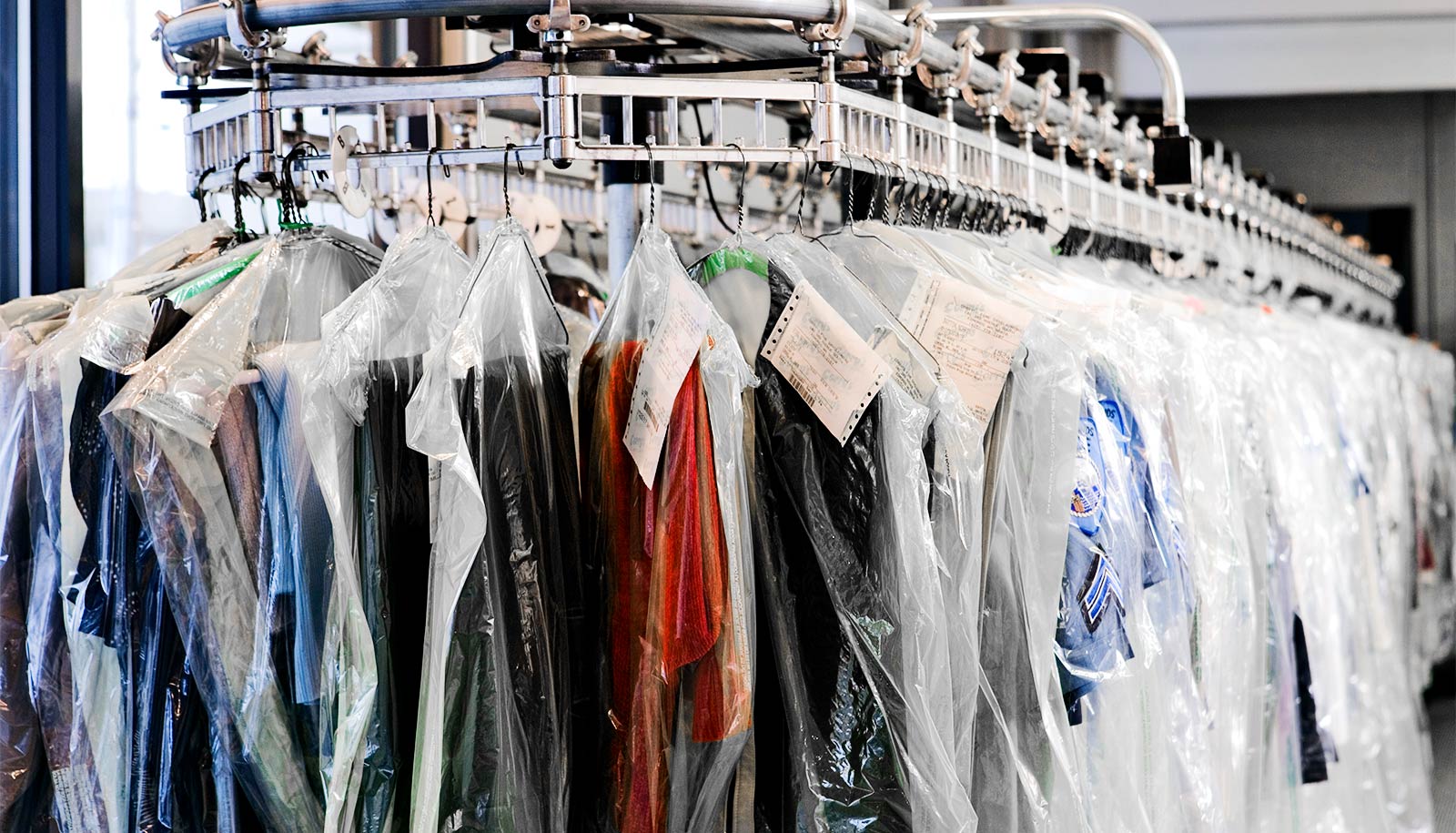New research digs into the fragrance chemicals that fill the air in nail salons.
You know that nail salon smell? That sharp hit of chemicals, the strangely sweet scent of polish, the faint tingle in your nose? That’s air pollution, and it’s been linked to a variety of health effects experienced by the workers who breathe it.
Nail salon workers commonly experience irritated skin and eyes, headaches, loss of smell, and respiratory problems.
Officials in some cities and states, including Washington, have introduced new regulations designed to better protect nail salon workers—a population that is 81% women, 79% foreign-born, and typically earns low wages.
But the mysteries around what, exactly, causes those potent smells make protecting these workers more difficult. Cosmetics manufacturers are rarely required to disclose what specific chemicals they use to scent their products, which has hindered efforts to better understand the air that salon workers breathe.
Diana Ceballos, a University of Washington assistant professor of environmental and occupational health sciences, set out to solve the mystery.
In a new study in Atmospheric Pollution Research, Ceballos and her coauthors analyzed the air in a group of nail salons around Boston—where Ceballos previously worked at Harvard University—and identified 18 distinct fragrance chemicals. It’s the most comprehensive study to date of the specific fragrance chemical mixtures found in nail salon air, and will allow researchers to further study the potential health risks.
Here, Ceballos explains the findings of the study, the mysteries around fragrance chemicals, and how to better protect nail salon workers’ health:
Nail salons are a bit of a research specialty of yours. You’ve published papers on trace elements in nail polish, workers’ exposure to “old” solvents and metals as well as “new” harmful chemicals, and the presence of plasticizers in popular nail products.
How did you come to focus on nail salons and their workers?
I started working on nail salons soon after I read a New York Times exposé back in 2015. It won all sorts of awards. When that story came out, it created havoc. I was working at the Centers for Disease Control and Prevention at the time, and the New York Health Department asked for technical assistance because they were horrified by the conditions in nail salons. I was put on the team partly because I’m an industrial hygienist, but also because I speak Spanish, and there are a lot of Spanish-speaking workers in these salons.
Then my life changed, and I went back to academia. I just knew there was more we could be doing. There was just so little research in this area, it was incredible. So, I decided I wanted to focus on nail salons. In the meantime, a lot of other people had the same idea, so lots of different groups around the country and internationally have started working on this.
What are fragrance chemicals, and what do we know about them?
Fragrances are added to nail salon products to create a desired smell—lotion that you want to smell like lavender, for example—but many fragrances are used to mask undesired smells. A lot of nail products have very strong, not-so-good smells, so companies add fragrances to mask those smells. But then you have even more scented chemicals in the air!
A good number of fragrances are known sensitizers. That doesn’t only cause irritation on the skin, but, for example, some fragrances could trigger an asthma attack if inhaled. Or, if they’re a sensitizer, they could even help cause asthma and other respiratory complications. It’s not just the skin, it’s the entire immune system. And that’s just the effects that we know of.
There are also some positive effects from fragrances. It’s well-known that some fragrances can be relaxing or affect the ambiance of an environment. But that hasn’t been well-studied. Some of these chemicals are very little-known. They could be toxic, but we don’t know. They’re just used in small amounts to produce fragrance, and for the most part, chemical regulations have been focused on bigger culprits. It’s just in the last decade or so that officials have paid attention to chemicals that show up in smaller quantities, like fragrances.
For a very long time, fragrances were trade secrets, and specific chemicals weren’t listed as ingredients. Labels just says “fragrance.” In the last 10 years, chemical regulations in Europe and in some states have introduced more discrimination of toxic chemicals that could include fragrances, but there’s a lot of work still to disclose the ingredients.
For example, in the new cosmetics bill in Washington, there’s more information required on ingredients lists. That was already the case in California, for example, but it’s just starting. We aren’t the first ones to ever measure them, but to our knowledge we’ve measured the biggest number of fragrances.
Also, our analysis suggests that not only nail products are contributing to fragrances, but also other products in the salons such as personal care products and cleaning agents are potential emission sources.
Many people can identify the strong scent of a nail salon, but I’m not sure we consider that we’re actually smelling air pollution. How does that pollution affect nail salon workers?
Indoor air quality is important for anyone. The quality of our health depends on the air that we breathe. Even for a customer, nail salons are very fragrant and have many odors. Some people are very sensitive to odors. Even just talking about the odor itself can trigger a lot of health effects. People can get headaches, dizziness, and get nauseated. So, there are people that don’t go to nail salons because they can’t be in there. And that’s a customer. Imagine the workers.
There are people who have to do this work because they don’t have training in anything else, and in surveys of the health of people who work in nail salons, it’s fairly prevalent to have headaches, irritation, fussiness—all the typical symptoms of odors, let alone toxic chemicals. It can deteriorate your well-being and quality of life, especially as some of these workers are on 12-hour shifts, seven days a week. So, it’s significant, the amount of time they’re exposed to these fragrances along with many other toxic chemicals.
You note throughout your research that the air pollution in nail salons is something that can affect the air we all breathe—even if we never visit a salon. How is that possible?
It’s very important to lower chemical concentrations indoors because they eventually go outside and contribute to overall air pollution. It’s hard to control that in small businesses, but one thing that was clear when Boston was building a ventilation policy was that it was important to make sure businesses filtered out chemicals before they went out the window. Now we know that fragrances make up a considerable part of overall chemicals in nail salons and they’re adding to the mix. And since you have fragrances in a bunch of products, it all adds up.
We must consider the accumulated burden that fragrances can have in the indoor environment and put more purposeful thought into how we produce products that contain those things—not just during the life cycle of the products, but also how they interact with the environment.
There are policies right now that are trying to work on fragrances, but we need to learn more. It’s going to be a while before we can control or guide manufacturers better. It’s very early, but I think there’s a lot we can learn about fragrances in the future.
Additional authors of the paper are from the University of Memphis and of Boston University.
Source: University of Washington



